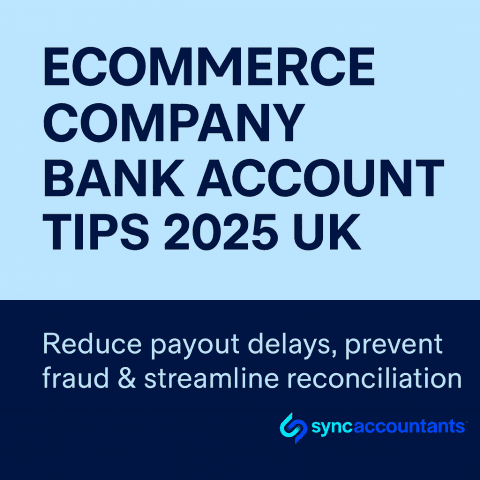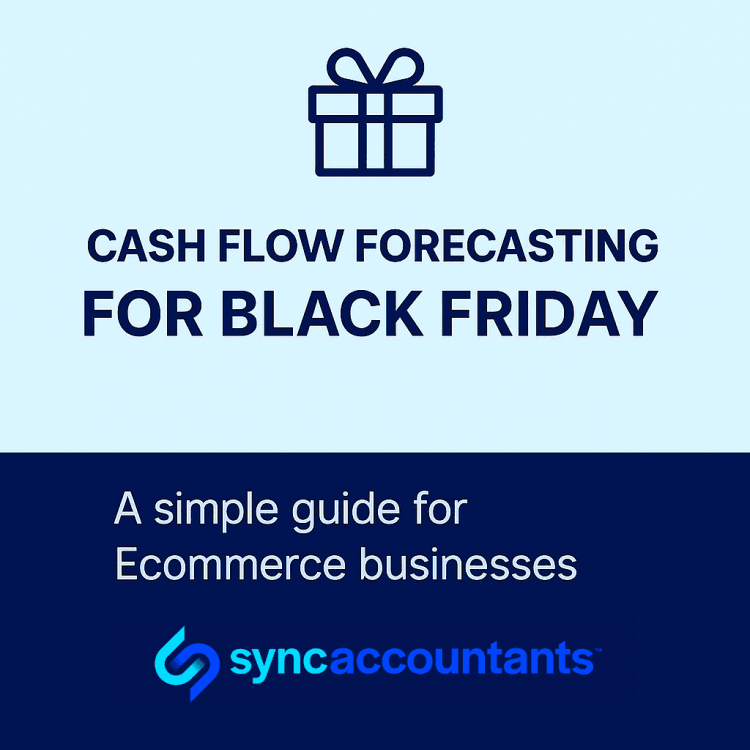
Do I Need a Separate Correspondence Address for My TikTok Business?
October 9, 2025
Do You Lose Business Money If You Close a UK Company in 2025?
October 23, 2025Ecommerce company bank account tips 2025 UK, if you sell on Amazon, TikTok Shop or Shopify, the right banking setup reduces payout delays, avoids fraud, and streamlines reconciliation. Here’s a pragmatic, platform-specific playbook for UK sellers.
1) Know your payout clocks (Amazon, TikTok Shop, Shopify)
- Amazon: Typical cycle every 14 days, with bank transfer settlement often adding 3–5 business days. New sellers and accounts with reserves/holds can wait longer. Keep bank + card details valid and claims resolved to prevent holds.
- TikTok Shop: Payouts initiate 1–31 days after delivery depending on your settlement tier (performance can accelerate this). Funds go to the bank account you connected in Seller Center.
- Shopify Payments (UK): Standard payout period is 3 business days to your linked business account (first payout may take longer for new accounts).
2) Bank account setup that fits marketplaces
- Dedicated GBP business account per platform: Create separate “income” accounts or sub-accounts/spaces named Amazon, TikTok, Shopify. Ring-fence VAT, ad spend, COGS and owner pay to avoid cash creep.
- Match legal & KYC details: Ensure Companies House registered email, directors and PSCs are verified ahead of the 18 Nov 2025 identity-verification start. Mismatches trigger payout holds.
- FSCS cover: Plan around the £85,000 per authorised firm limit for eligible businesses; diversify large balances across separately authorised institutions.
3) Speed up cash conversion
- Amazon: Dispatch fast, confirm shipment, keep Valid Tracking Rate green, and minimise A-to-z claims. Use the Payments dashboard to spot Unavailable balance (reserves) and plan stock buys accordingly.
- TikTok Shop: Push for higher settlement tiers via on-time fulfilment and low after-sales. Check the Finances → On hold section for your actual settlement window.
- Shopify: Align your payout day with supplier payments. If cash is tight, move some orders to account-to-account (Pay by Bank) via your gateway to reduce card fees and get cleared funds faster.
4) Fraud controls that actually help ecommerce
- Confirmation of Payee (CoP): Turn it on for any bank transfers (wholesale, influencers, 3PLs). Train staff to stop on “no/partial match”.
- APP-fraud reimbursement: From Oct 2024, Faster Payments/CHAPS scams have mandatory reimbursement for consumers, charities and most micro-enterprises (caps and exclusions apply). Still enforce strict payee checks and maker–checker approvals.
- Payout-account hygiene: Any change to bank details can trigger platform verification and temporary holds—schedule changes outside peak sales periods.
5) Open banking wins for 2025
On Shopify/D2C, add Pay by Bank and watch chargebacks drop. Variable Recurring Payments (VRP) is expanding, opening new use-cases (subscriptions, instalments) with instant settlement and tighter customer control than cards. Ask your PSP about commercial VRP support and pricing.
6) Accounting workflows that save hours
- Automated feeds: Connect bank feeds to Xero/QuickBooks and set rules for Amazon/TikTok/Shopify payouts, fees and reserves.
- Marketplace clearing accounts: Post daily sales/fees into platform clearing accounts; reconcile when the payout lands to keep COGS/fees accurate.
- FX & expansion: Use multi-currency accounts for EU/US sales to avoid double-spreads. Convert in bulk on good days rather than transaction-by-transaction.
7) Your copy-paste checklist
- Separate GBP business accounts or sub-accounts for each platform.
- Companies House details match bank + platform; ID verified.
- CoP enabled; payment approvals on high-value supplier/3PL transfers.
- Cash calendar maps payout days to stock/ads/ payroll.
- Bank feeds + rules created; marketplace clearing accounts in your ledger.
Conclusion
Follow these ecommerce company bank account tips 2025 UK to align marketplace payout timings with your cash calendar, reduce fraud, and keep reconciliation clean. Small tweaks—like CoP, VRP for D2C, and platform-specific bank sub-accounts—create big cashflow gains.



